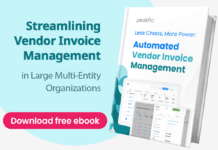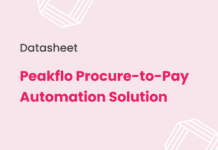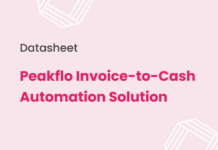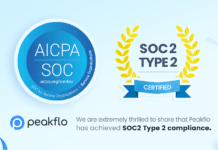The Accounts Payable function plays a crucial role in maintaining a healthy cash flow and fostering strong vendor relationships. To navigate this landscape effectively, businesses leverage Key Performance Indicators (KPIs) tailored to the AP processes.
In this blog, we delve into the world of Accounts Payable KPIs, exploring why they matter and which metrics businesses should focus on for optimal financial efficiency.
What is Accounts Payable KPI?
Accounts Payable Key Performance Indicators are specific metrics and measurements used to assess the efficiency, accuracy, and effectiveness of an organization’s accounts payable processes.
Accounts payable KPI helps businesses evaluate how well they manage their payment obligations, vendor relationships, and overall financial health. These KPIs provide insights into various aspects of the accounts payable function, allowing businesses to identify areas for improvement and make informed decisions.
To leverage the benefits of Accounts Payable KPI, businesses should follow these key steps:
- Tailor KPIs to align with business goals and the specific requirements of the AP process.
- Implement advanced AP software to automate processes, reduce errors, and enhance overall efficiency.
- Continuously monitor KPIs and analyze trends to identify areas for improvement and strategic decision-making.
10 Essential Accounts Payable KPIs
Days Payable Outstanding (DPO)
DPO measures the average number of days it takes for a company to pay its suppliers.
| DPO = (Accounts Payable / Cost of Goods Sold) * Number of Days |
Why it Matters: Reflects the efficiency of cash management and vendor relationships. A lower DPO could indicate timely payments, but it’s crucial to balance with maintaining positive vendor relationships.
How to Optimize:
- Negotiate favorable payment terms with suppliers.
- Implement automated invoicing and payment systems for quicker processing.
Invoice Processing Cost
Measures the cost incurred in processing invoices, including labor, technology, and overhead.
| Invoice Processing Cost = Total Invoice Processing Costs / Number of Processed Invoices |
Why it Matters: Indicates efficiency and cost-effectiveness of AP operations. Lower costs signify streamlined processes and potential savings.
How to Optimize:
- Implement automated invoice processing solutions.
- Regularly review and optimize workflow to reduce manual intervention.
Number of Invoice Processed
Evaluates the efficiency of the AP team by measuring the average number of invoices processed by each employee daily.
| Number of Invoices Processed per Employee per Day = Total Number of Processed Invoices / Total Number of AP Employees / Number of Working Days |
Why it Matters: Indicates the productivity and workload distribution within the AP team, helping to identify staffing needs and efficiency improvements.
How to Optimize:
- Implement workflow automation to reduce manual processing time.
- Regularly assess workload distribution and adjust team resources accordingly.
Percentage of Discounts Captured
Evaluates the proportion of available early payment discounts that a company successfully captures.
| Percentage of Discounts Captured = (Number of Discounts Taken / Number of Discounts Available) * 100 |
Why it Matters: Reflects the effectiveness of capturing cost-saving opportunities and negotiating favorable terms with vendors.
How to Optimize:
- Implement automated systems to identify and take advantage of early payment discounts.
- Strengthen communication and collaboration with vendors to negotiate favorable terms.
Error Rate in Payments
Measures the percentage of payments with inaccuracies or errors.
| Error Rate = (Number of Payments with Errors / Total Number of Payments) * 100 |
Why it Matters: Ensures accurate financial transactions, preventing costly mistakes and maintaining trust with vendors.
How to Optimize:
- Implement rigorous quality control measures in the payment approval process.
- Invest in training programs for staff involved in payment processing.
Vendor Satisfaction
Gauges the level of satisfaction among vendors based on their experiences with the AP process.
| Vendor Satisfaction Score = (Positive Vendor Feedback / Total Vendor Feedback) * 100 |
Why it Matters: Satisfied vendors are more likely to offer favorable terms and maintain strong partnerships, contributing to smoother operations.
How to Optimize:
- Establish clear communication channels with vendors.
- Address and resolve issues promptly to enhance overall satisfaction.
On-Time Payment Percentage
Measures the percentage of payments made within the agreed-upon terms.
| On-Time Payment Percentage = (Number of On-Time Payments / Total Number of Payments) * 100 |
Why it Matters: Demonstrates reliability and trustworthiness in meeting financial obligations, fostering positive vendor relationships.
How to Optimize:
- Implement automated reminders for payment deadlines.
- Streamline approval processes to avoid delays in payments.
Invoice Approval Cycle Time
Tracks the average time it takes to approve invoices from receipt to payment.
| Invoice Approval Cycle Time = (Total Time to Approve Invoices / Number of Invoices) |
Why it Matters: Shorter approval cycles lead to faster payments, preventing delays and potential strain on vendor relationships.
How to Optimize:
- Implement workflow automation to reduce manual approval steps.
- Conduct regular reviews to identify and eliminate bottlenecks in the approval process.
Total Invoice Cycle Time
Measures the total time it takes for an invoice to move through the entire processing cycle, from receipt to payment.
| Total Invoice Cycle Time = Date of Payment – Date of Invoice Receipt |
Why it Matters: Reflects the overall efficiency of the invoice processing workflow and helps identify bottlenecks and areas for improvement.
How to Optimize:
- Implement automation to reduce manual processing stages.
- Streamline approval processes and minimize unnecessary delays in each stage.
Electronic Payment Adoption
Measures the percentage of payments made electronically versus traditional paper-based methods.
| Electronic Payment Adoption = (Number of Electronic Payments / Total Number of Payments) * 100 |
Why it Matters: Showcases modernization and efficiency in payment methods, contributing to streamlined processes.
How to Optimize:
- Encourage vendors to accept electronic payments.
- Implement secure and efficient electronic payment systems for internal processes.
Conclusion
The top 10 Accounts Payable KPIs outlined in this blog are strategic navigators, offering insights into the efficiency, accuracy, and overall effectiveness of AP operations. To harness the full potential of accounts payable KPI, businesses must tailor them to align with their unique goals, leverage advanced AP software for automation, and maintain a vigilant eye on trends for continuous improvement.
For businesses seeking a comprehensive solution to enhance their AP processes, consider the Peakflo AP Automation solution. Our cutting-edge software is designed to streamline invoice processing, reduce errors, and optimize workflows. With Peakflo, you can not only track these essential KPIs but also elevate your entire AP operation, contributing to improved cash flow and sustained financial success.









![Why AI Sales Calls Are Making Good Sales Reps Even Better [2025 Guide] ai sales calls](https://cdn-kmjmp.nitrocdn.com/YvtqmrsiHUxqerlSiZgbfzqqTARWTElr/assets/images/optimized/rev-a4aafe3/blog.peakflo.co/wp-content/uploads/2025/09/65168cf6-3001-4733-8cbc-12d5684cf449-218x150.webp)

































